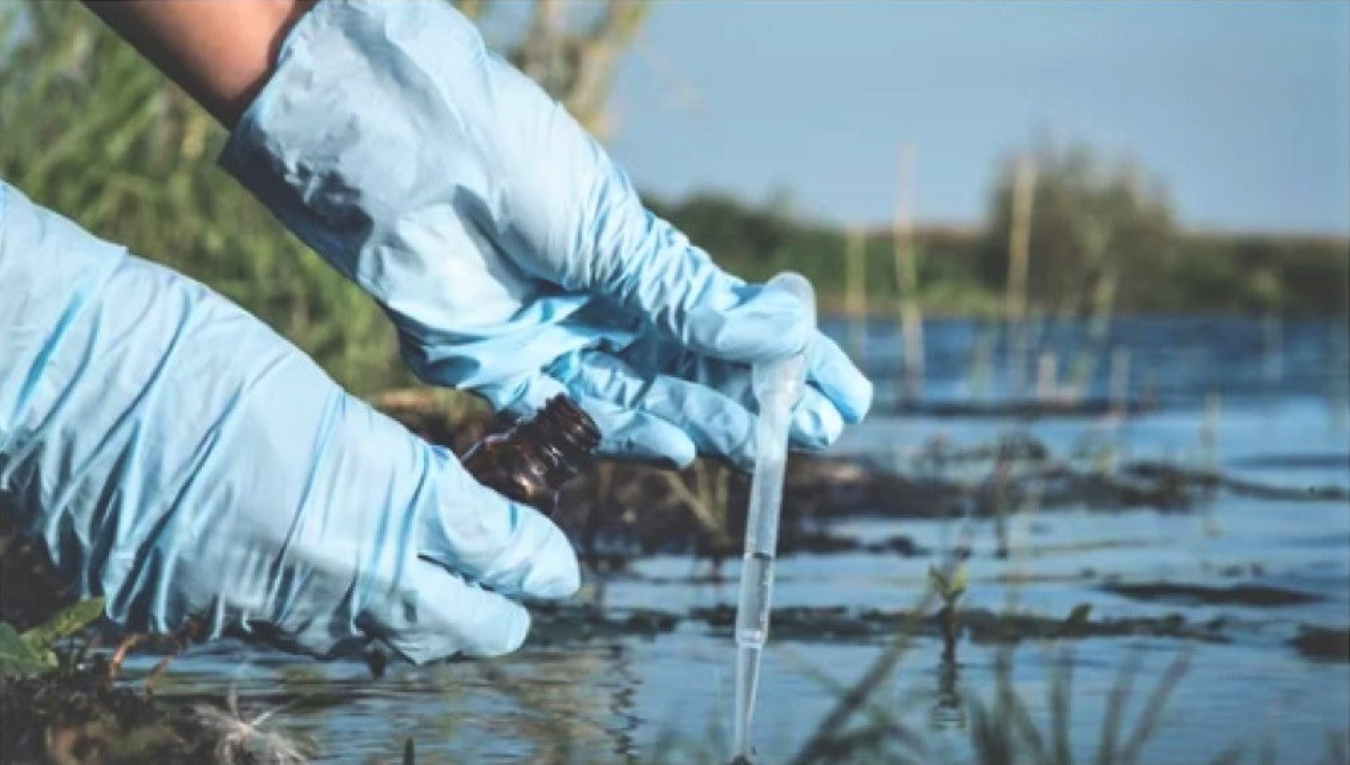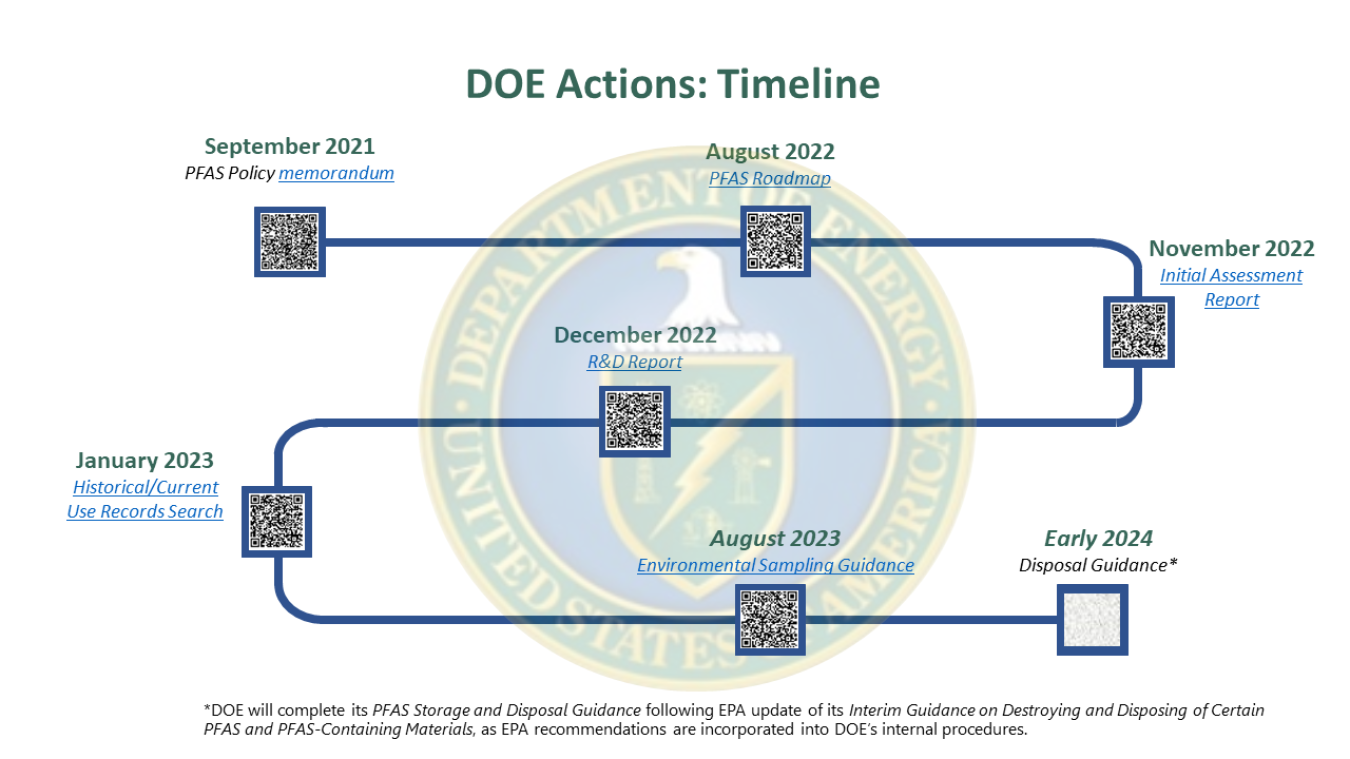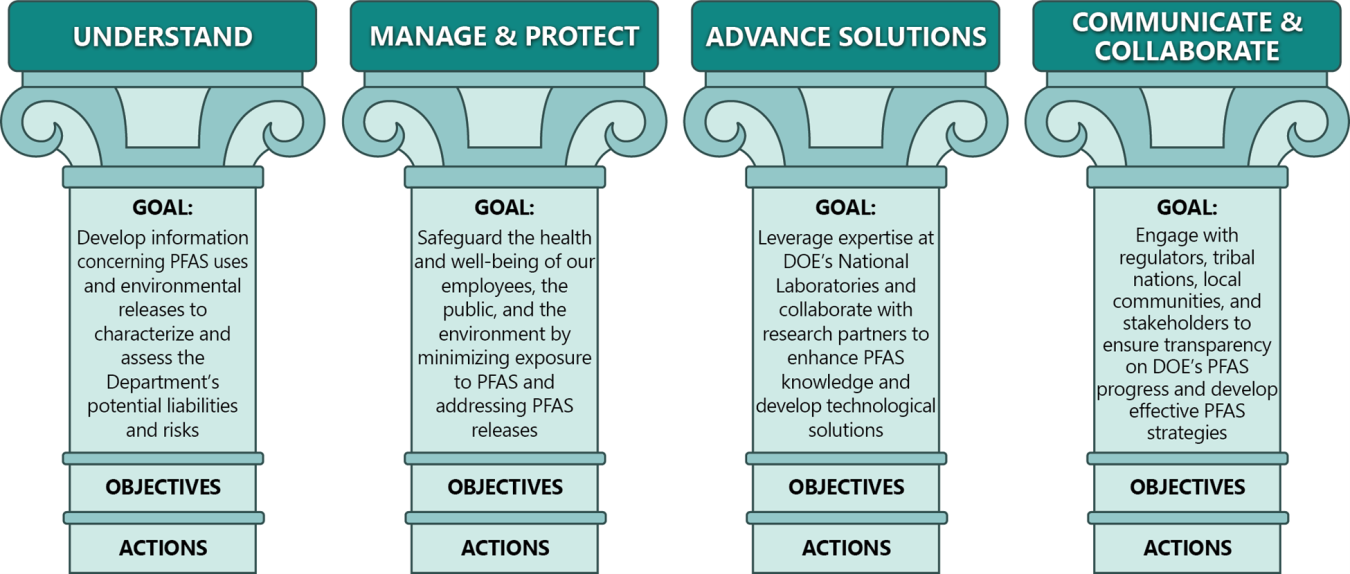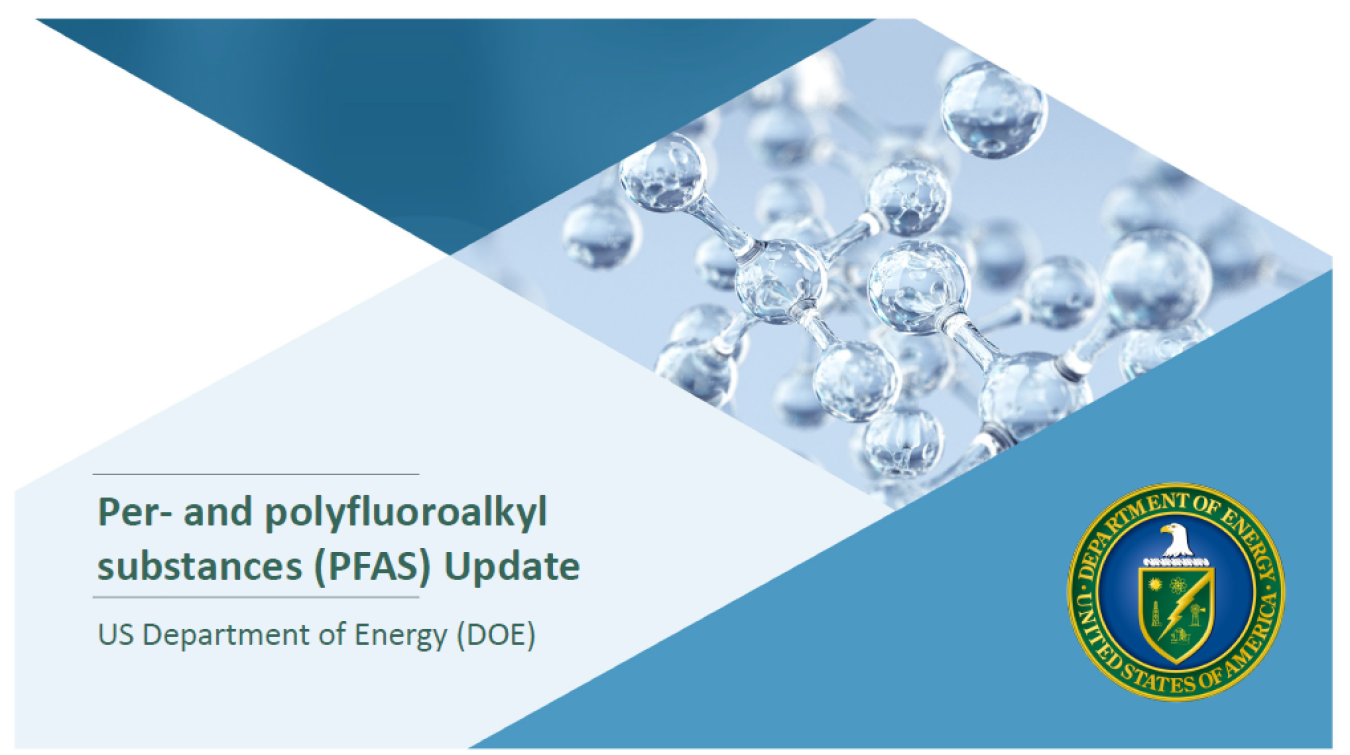
What Are PFAS?
Per- and polyfluoroalkyl substances (PFAS) are a group of human-made chemicals that were first used in the 1940s, followed in subsequent decades by the development of thousands of new PFAS chemistries. Manufacturing practices and widespread usage of PFAS products by consumers, government, and commercial entities have resulted in the low-level presence of PFAS in soil, surface water, groundwater, plants, and animals.
PFAS have been designated a public health concern by the Agency for Toxic Substances and Disease Registry (ATSDR), and growing concern over potential toxicity and persistence of PFAS in the environment has led the Environmental Protection Agency (EPA) to develop a multi-faceted scientific and regulatory approach to protect human and ecological health.
The Department of Energy, led by the Office of Environment, Health, Safety, and Security, is working actively to assess and understand PFAS presence at DOE sites, and to take actions to manage risk.
Our Commitment

The Department of Energy is committed to the health and safety of the public and our workers and to protecting the environment.
Our goal is to protect human health and the environment in transparently assessing and addressing the presence of PFAS at DOE sites while deploying the Department’s scientific expertise to solve PFAS challenges.
DOE’s efforts to address PFAS are aligned with Department goals for safe, clean and thriving communities. DOE recognizes its responsibilities to address the environmental legacy from its activities.
DOE will continue to engage with Federal and state regulators, local communities and tribes regarding PFAS at its sites. DOE is committed to collaboration and keeping stakeholders and the public informed about its activities related to PFAS.

DOE Actions on PFAS
- The DOE policy “Addressing PFAS at the Department of Energy” guides DOE efforts to mitigate risk associated with PFAS use, storage/disposal, and reporting of releases at DOE sites.
- The PFAS Strategic Roadmap: DOE’s Commitments to Action 2022-2025 outlines goals, objectives and specific actions the Department of Energy is taking to address risk from PFAS.
- The Initial Assessment of Per- and Polyfluoroalkyl Substances at Department of Energy Sites summarizes the results of a preliminary evaluation of known historic or current PFAS uses, PFAS occurrence in the environment, and regulatory and stakeholder interactions at DOE program sites.
- The Department is leveraging the expertise of its National Laboratories and other partnerships to enhance PFAS research, guided through the development of an Initial DOE PFAS Research Plan. This initial research plan identifies five PFAS research and development topics, inventories ongoing DOE research efforts and identifies potential research needs.
- PFAS Research and Development (R&D) Workshop
DOE Timeline

Goals and Objectives
All work at DOE begins with a fundamental commitment to protecting human health and the environment. This commitment guides the Department’s approach to PFAS, which rests on four pillars and their associated goals.

PFAS Overview
DOE’s “Per-and polyfluoroalkyl substances (PFAS) Update” includes general information on PFAS, the Department’s PFAS mission statement, recent actions and ongoing efforts to address PFAS, additional PFAS resources and contact information.
Click the image below to access the presentation.
DOE Resources
- Fact Sheets
- DOE and PFAS. This Fact Sheet provides an overview of PFAS and describes DOE's approach to addressing PFAS at its sites.
- DOE Roadmap for Actions on PFAS. This Fact Sheet provides an overview of DOE's commitments in its Strategic Roadmap, structured into four pillars: (1) Understand, (2) Manage and Protect, (3) Advance Solutions, and (4) Communicate and Collaborate.
- Guide for Investigating Historical and Current Uses of Per- and Polyfluoroalkyl Substances at Department of Energy Sites. This guide outlines a framework for DOE programs investigating historic or current PFAS uses at DOE-owned or -operated entities nationwide.
- PFAS Environmental Sampling Guidance. This guide describes processes and considerations for investigating, sampling, and analyzing PFAS in the environment at DOE sites and facilities.
- At the direction of Congress, DOE provided a report, Assessment of Fluoropolymer Production and Use With Analysis of Alternative Replacement Materials (January 2024), that contains a life cycle assessment and cost-benefit analysis of common fluoropolymers currently in use, and potential replacements in commerce.
- DOE’s Occurrence Reporting Program. The following memo and DOE Guidance document provide further information on reporting PFAS-related events:
- DOE Operating Experience Documents communicate information related to PFAS that were published as part of DOE’s Corporate Operative Experience Program:
- Operating Experience Summary, Addressing New Health Advisories for PFAS in Drinking Water, November 2022
- Operating Experience Summary, Emerging Contaminants in Groundwater at Brookhaven National Laboratory, March 2020
- Operating Experience Level 3 Document, PFAS Awareness, September 2019
General Resources
- Environmental Protection Agency: Per- and Polyfluoroalkyl Substances (PFAS)
- Centers for Disease Control and Prevention
- Agency for Toxic Substances and Disease Registry: Per- and Polyfluoroalkyl Substances (PFAS) and Your Health
- National Institute of Occupational Safety and Health: PFAS | NIOSH | CDC
- Department of Defense: Per- and Polyfluoroalkyl Substances (PFAS)
- Food & Drug Administration: Per- and Polyfluoroalkyl Substances (PFAS) | FDA
- Interstate Technology and Regulatory Council: PFAS - Per- and Polyfluoroalkyl Substances
- National Academies: Guidance on PFAS Testing and Health Outcomes
Contact Us
Contact Us to ask a question or provide feedback.


